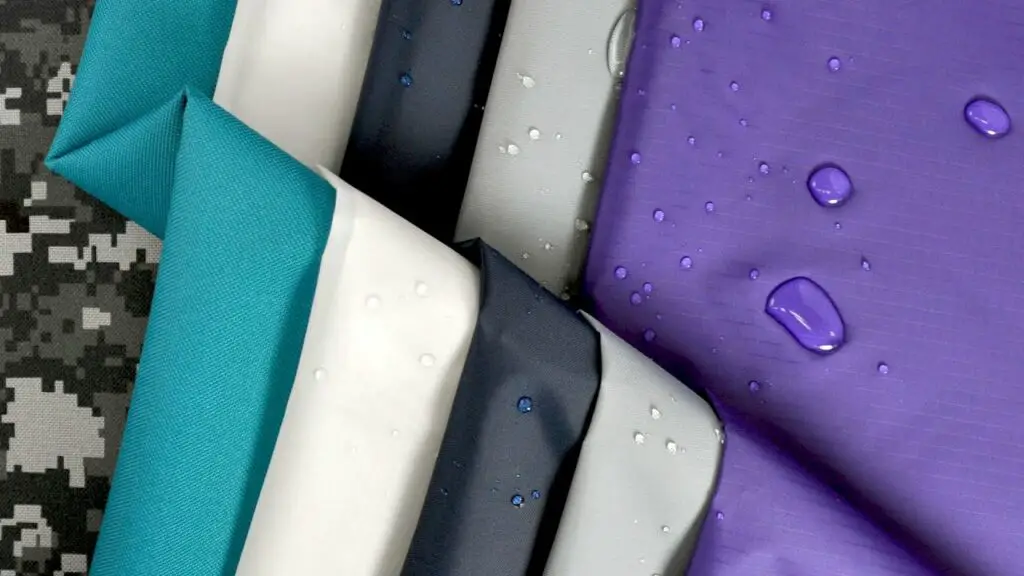Who doesn’t like to flaunt in feather-light, colorful nylon attire? But ever wondered why people say not to wear it in summer? Well, we are here to clear all your queries on this man-made fiber.
So let’s start with the answer to the question, “why are nylon clothes not preferred in summer?”. It’s simply because nylon does not absorb sweat.
Nylon has low absorbency and air circulation. The heat and sweat accumulated on your body will cling to your skin. So, the fabric will make you feel terribly hot, clammy, and uncomfortable on a summery day.
You may look super hot in a nylon cloth but it’s not that cool! Now, let’s have a deep look into the fabric.

What is Nylon?
Nylon is a synthetic polymer composed of long chains of carbon-based molecules called monomers. The revolutionary fiber was invented in the US in 1935 by a group of scientists headed by the chemist Wallace Hume Carothers at the DuPont Experimental Station, Wilmington, Delaware.
It’s the first-ever fully synthetic fiber. Nylon is made out of petroleum byproducts, air, and water. It is the strongest man-made textile fiber ever manufactured.
The Textile Fiber Product Identification Act (TFPIA) defines nylon as “A manufactured fiber in which the fiber forming substance is a long-chain synthetic polymer in which less than 85% of the amide-linkages are attached directly to two aromatic rings”.
It’s also known as polyamides as it contains amide groups in the backbone chain. Nylon was introduced in the market as a substitute for silk.
How is Nylon Made?
Nylon fabric is made after numerous processes. Hexamethylene Diamine is extracted from crude oil and combined with adipic acid to form a crystallized substance called nylon salt.
Nylon salt is then heated to a molten form and is extracted through a metal spinneret. It is then loaded into a spool called bobbin and the fibers are stretched to increase strength and elasticity.
These fibers undergo a process called drawing where they are wound into another spool. The resultant fibers are ready to be spun and dyed with desired colors into textiles or other fibers.
What are the Different Types of Nylon?
There are different variants of nylon. Nylon 6,6 is the first fully synthetic fabric and it is the commonly used variant in the textile industry. Nylon 6 is used in the textile industry but is less popular than Nylon 6,6.
Nylon 46 is manufactured only by the International Corporation DSM. This kind of nylon is highly resistant to inhospitable environments and is widely used in engine parts.
Nylon 510 was developed by DuPont to replace Nylon 6,6 in the textile industry. However, its production costs limited it to industrial and scientific use. There is another variant known as Nylon 1,6 which is rarely used in the textile industry.
What are the Uses of Nylon?
The first commercial product introduced in the market was a nylon-bristled toothbrush, in 1938. Nylon stockings were a smash hit in the 1940s.
Nylon is strong, durable, abrasion-resistive, lightweight, and cost-effective. This makes nylon an unavoidable resource in several industries.
We use nylon on an everyday basis; from the toothbrush we brush with to the umbrella we shelter in on a rainy or sunny day.
Nylon is used to manufacture toothbrushes, bags, hair combs, coverlets for furniture, slings, ropes, hoses, umbrellas, footwear, raincoats, fishing lines, food packages, and several other daily use commodities.

The hosiery industry widely uses nylon fiber to make sportswear, swimwear, shorts, activewear, socks, stockings, lingerie, etc. It is widely used in the automobile industry to make tire cords, machine parts like gears and bearings, airbags, etc.
Nylon is used as plastic in machinery. The fiber is used to manufacture artificial turfs. Nylon is used in electrical appliances like insulators, switch housings, cable ties, etc., due to its electrical insulation and corrosion resistance. It is used in manufacturing military supplies like parachutes, tents, tarpaulins, ropes, etc.
Do you know? The first American flag erected on the moon by Neil Armstrong and Buzz Aldrin on July 21, 1969, was made of nylon!
Why No Nylon in Summer?
Nylon fabrics have a huge fan base. But let your nylon clothes be locked in your wardrobes in summer. As discussed earlier, Nylon lacks moisture-wicking properties.
The fabric doesn’t circulate air in and out compared to other natural fabrics. So, the sweat will remain on the surface of your skin. You may feel sticky, smelly, and hot in a soggy fabric. Prolonged contact with sweat may get you itches and even fungal infections.
Summer is more prone to fire attacks, so wearing nylon is a bit dangerous as it melts and sticks onto your body if caught fire. The fabric has low resistance to sunlight; prolonged exposure to direct sunlight can weaken the fabric.
Can I Wear Nylon in Summer?
Can I wear nylon in summer? Well, if you are looking for a carefree fabric, yes! It’s a ‘wash and go’ fabric; the water will quickly drip and dry off the fabric when washed.
The fabric is easily maintainable; dirt gets easily washed off from the fabric. Nylon is smooth and soft, easy to drape, has high resilience and elasticity, and is mildew and shrinkage resistant. So, if you are a hurry-scurry person who doesn’t mind the weather, you can pick nylon.
Which is the Best Fabric for Summer?
Well, it’s always better to go for cotton in summer. Cotton is a breathable fabric. It lets air move in and out freely and wicks away sweat easily.
So, the fabric lets you dry in a New York minute! You will feel super cool and fresh in this ethereal fabric. Since it’s a pure natural fiber, it’s hypoallergenic and non-irritant; highly ideal for sensitive skins. Cotton is also a highly economical fabric. So, cotton wins the season if it’s summer.
Linen, made of flax fiber is another natural fabric befitting for summer. It’s a lightweight, loosely woven fabric; hence it’s highly breathable.
It absorbs moisture and dries quickly like cotton. Linen is stronger and stiffer than cotton. So the fabric doesn’t stick to your body even if you’re sweaty. Linen is a bit expensive compared to cotton.
Can We Wear Nylon and Cotton Blend Fabrics in Summer?
Nylon was marketed by DuPont as strong as steel and smooth as a spider web, which never runs. The fabric was even named “Norun” as it claimed to have no runs.
Yet, soon nylon proved to be highly prone to runs and tears. So, to avoid false claims, it was finally renamed “Nylon”. Nylon was also found to be lacking moisture-wicking quality and irresistible to heat.
So, manufacturers started mixing it with other fabrics like cotton, polyester, wool, spandex, etc., in an effort to eliminate its undesirable properties and add desirable qualities to the fabrics it’s mixed with.
When nylon is blended with cotton, the new fabric will have good strength, abrasion resistance, fast-drying property, wrinkle resistance with high absorbency, and breathability.
So, cotton-nylon blend fabric is a good choice over pure nylon fabric in summer. You will get the desired qualities of cotton and nylon in a single piece of cloth.
Which is the Best Season to Wear Nylon?
Nylon is always the go-to fabric when it comes to winter wear. It’s a good alternative for wool. The fabric doesn’t circulate air and keeps you warm during winter.
You will feel super comfy in a chilling climate if you wear a nylon cloth, gloves, socks or stocking. Nylon is also a good swimwear as it’s water-resistant. Raincoats made of nylon are the best in rainy seasons.
Why Shouldn’t You Prefer Nylon in Any Season?
Yet, we say no to nylon in any season! Do you know why? Nylon has harmful effects on the Earth. Limitless extraction of fossil fuels required for nylon manufacturing imbalances the ecosystem.
The production of adipic acid releases nitrous oxide which is way more harmful than carbon dioxide.
Besides, a considerable amount of energy is required and waste is generated during the manufacturing process. A large quantity of water is required to cool the fiber and this water is left polluted after the process.
Being said that nylon is a fully synthetic fiber, it’s a non-biodegradable substance. When natural fibers get decomposed in the soil within a few years, nylon will remain solid in the soil even after decades.
Nylon is rarely recycled since the process is difficult and expensive. When burned, nylon emits toxic fumes and ashes.
A Few Tips for Workers
1.) Avoid using nylon clothes if you work in an industry prone to fire accidents.
2.) Nylon is the best choice if you are a swimmer.
3.) You can opt for nylon if you are someone who works in extremely cold conditions
4.) Nylon is not a choice for people who work in open sites.
5.) It’s always a carefree fabric for working people who hardly get time to manage laundry.
6.) Let’s go green! Let nylon be your last pick as it’s not an environment-friendly fabric.







